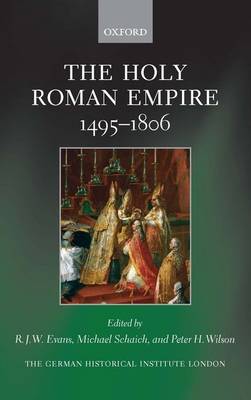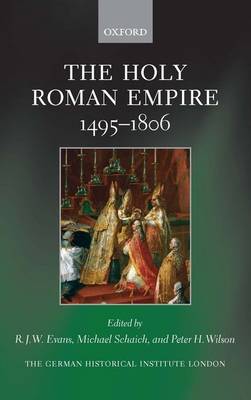
- Afhalen na 1 uur in een winkel met voorraad
- Gratis thuislevering in België vanaf € 30
- Ruim aanbod met 7 miljoen producten
- Afhalen na 1 uur in een winkel met voorraad
- Gratis thuislevering in België vanaf € 30
- Ruim aanbod met 7 miljoen producten
Zoeken
Omschrijving
Over the last forty years or so, research on the history of the Holy Roman Empire of the German Nation (1495-1806) has been transformed almost beyond recognition. Once derided as a political non-entity, a chaotic assemblage of countless principalities and statelets that lacked coercive power
and was stifled by encrusted structures and procedures, the Reich has been fully rehabilitated by more recent historiography. It is now being hailed by some as a model of peaceful conflict resolution in the centre of Europe which, in the long run, was able to defuse the religious tensions created
by the confessional divide of the sixteenth century and to protect its smaller members against the voracious appetite of more powerful neighbours. Some historians even draw lessons from the history of the Holy Roman Empire for our present. The multi-layered, federal structure of the old Empire and
its system of collective decision-making have been held up as a model for a peace-loving, multi-ethnic Europe, a European Union avant la lettre. Other historians have described the Reich as the first German nation-state, a political configuration based not on power and expansion, but on rights and
liberties, the rule of law and a structural lack of capacity for aggression. This volume takes stock of this research, particularly in the critical areas of the Empire's constitutional, religious and social history. A notable feature is the presentation of several decades of research in concise, accessible essays by continental scholars, much of it appearing in English for
the first time.
and was stifled by encrusted structures and procedures, the Reich has been fully rehabilitated by more recent historiography. It is now being hailed by some as a model of peaceful conflict resolution in the centre of Europe which, in the long run, was able to defuse the religious tensions created
by the confessional divide of the sixteenth century and to protect its smaller members against the voracious appetite of more powerful neighbours. Some historians even draw lessons from the history of the Holy Roman Empire for our present. The multi-layered, federal structure of the old Empire and
its system of collective decision-making have been held up as a model for a peace-loving, multi-ethnic Europe, a European Union avant la lettre. Other historians have described the Reich as the first German nation-state, a political configuration based not on power and expansion, but on rights and
liberties, the rule of law and a structural lack of capacity for aggression. This volume takes stock of this research, particularly in the critical areas of the Empire's constitutional, religious and social history. A notable feature is the presentation of several decades of research in concise, accessible essays by continental scholars, much of it appearing in English for
the first time.
Specificaties
Betrokkenen
- Auteur(s):
- Uitgeverij:
Inhoud
- Aantal bladzijden:
- 384
- Taal:
- Engels
- Reeks:
Eigenschappen
- Productcode (EAN):
- 9780199602971
- Verschijningsdatum:
- 19/05/2011
- Uitvoering:
- Hardcover
- Formaat:
- Ongenaaid / garenloos gebonden
- Afmetingen:
- 218 mm x 142 mm
- Gewicht:
- 635 g

Alleen bij Standaard Boekhandel
+ 220 punten op je klantenkaart van Standaard Boekhandel
Beoordelingen
We publiceren alleen reviews die voldoen aan de voorwaarden voor reviews. Bekijk onze voorwaarden voor reviews.











